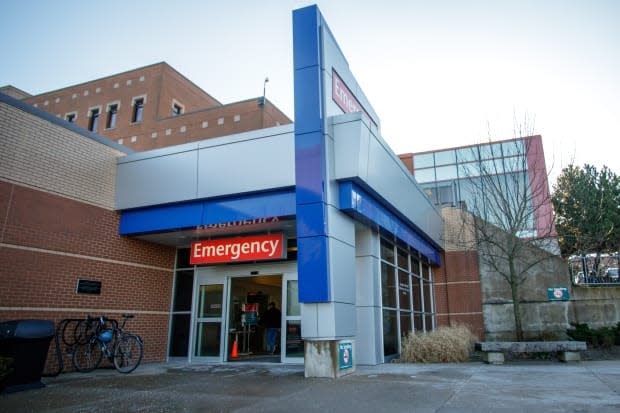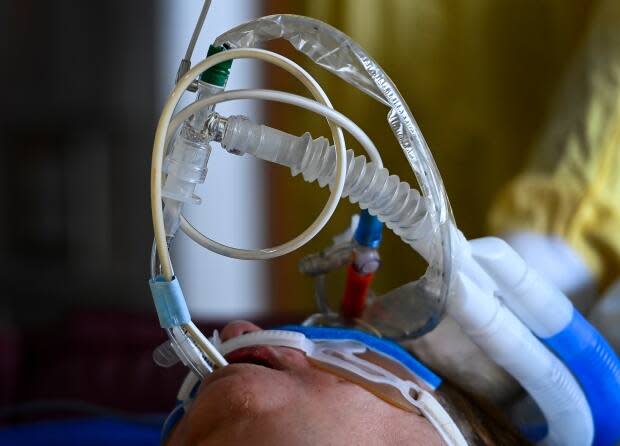ICU beds 'maxed out' at Halifax Infirmary as capacity increases across province

Nova Scotia is setting a plan in motion to expand its capacity for high-acuity beds as the number of COVID-19 patients requiring critical care continues to surge.
On any given day, there are about 98 beds across the province designated for critical care. If needed, that number can be more than doubled — to 229 — through Nova Scotia Health's provincial escalation plan.
"The modelling says we won't get to that number, and that won't be needed across the province," said Dr. Tony O'Leary, the province's medical director for COVID critical care.
But right now there is a need to increase intensive care capacity in the central health zone, where the majority of cases and subsequent hospitalizations are happening.

In the central zone alone, there were about 80 patients in hospital related to COVID-19 as of Thursday afternoon, including about 29 in intensive care. Those numbers fluctuate constantly.
Elsewhere in the province, two COVID-19 patients were in intensive care in the northern zone, and one patient each in intensive care in the eastern and western zones.
"We've maxed out what we would consider our normal ICU capacity and we are opening new beds to function in a critical care capacity within the Halifax Infirmary, and we're also having to activate the escalation plan for the province" said O'Leary.
Transferring patients
Nova Scotia Health's escalation plan includes opening new beds to function as ICU beds as well as transferring critical care patients to other ICU beds across the province.
Fewer than five patients have been transferred so far. The main transfer sites are the Cape Breton Regional Hospital, the Colchester East Hants Health Centre, the Valley Regional Hospital, and the Yarmouth Regional Hospital.

The decision to transfer patients is based on their stability, their needs, and whether there is an ICU bed available and appropriate for the level of care they need, including whether the receiving hospital feels it can support them.
"This isn't a plan that just off-loads the central zone; it is about looking at any ICU that becomes over-capacity, and looking at using the provincial beds as a whole resource for the province," O'Leary said.
"We don't want someone sitting over-capacity and not getting care in one zone when there's ample capacity in another."
Nurses 'most valuable resource'
Opening more ICU beds requires more than just physical beds and ventilators.
"It's a whole team required to make sure that bed is operational. And that's nurses, physios, respiratory therapists, social work — all of that team is required before we can expand," O'Leary said, adding nurses are key to that process.
"[Nurses are] one of our most scarcest resources, and our most valuable resources, so we've gotta make sure it's efficient."
The escalation plan is a balancing act. Staffing critical care beds means other services, like elective surgeries, need to be reduced.

"We do free up staff by closing or reducing other services to their bare minimum," said O'Leary. "They're never easy decisions to make."
Since April 23, about 1,600 surgeries have been postponed provincewide, said Nova Scotia Health spokesperson Carla Adams in an email. About 176 of those surgeries, or 11 per cent, have been rescheduled and completed. This figure includes surgeries postponed for all reasons.
Average ICU stay 10 days
Since April 24, O'Leary said about 30 patients with COVID-19 have come through the intensive care unit, though that number is likely higher now as it does not include the people admitted Thursday.
People who need to be on a mechanical ventilator stay an average of 10 to 11 days, O'Leary said, which is consistent with other jurisdictions across Canada.
Once their condition improves, the patient stays in hospital for post-ICU rehabilitation, though the length of that stay varies based on the person's health, fitness, and mobility.
The majority of COVID-19 patients in the ICU are 40 years or older, but O'Leary said they have been as young as 21.
Based on modelling, O'Leary said hospitals will likely continue to see an increase in critical care patients over the next week or so, followed by a slow decline in the two to three weeks following.
MORE TOP STORIES

 Yahoo Finance
Yahoo Finance 